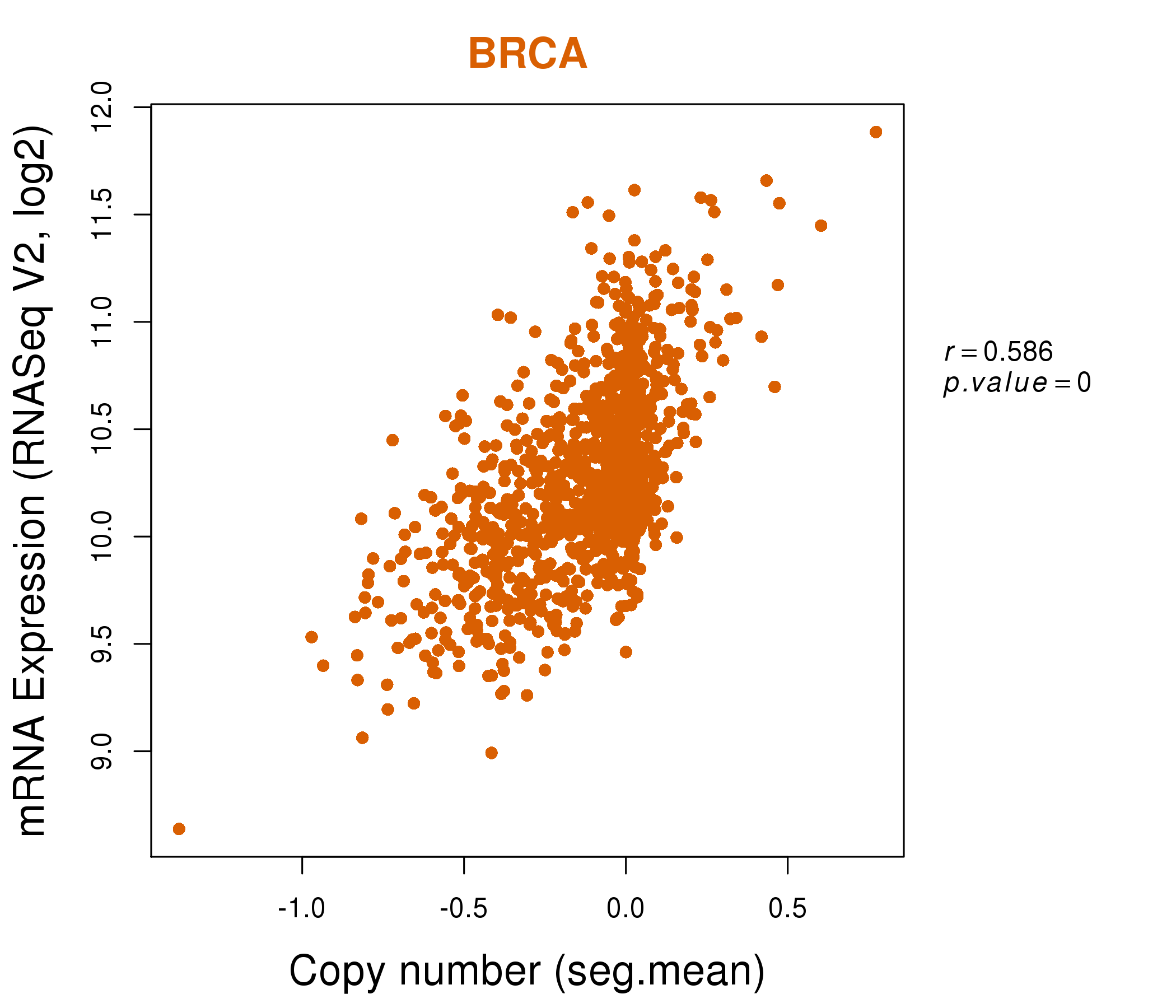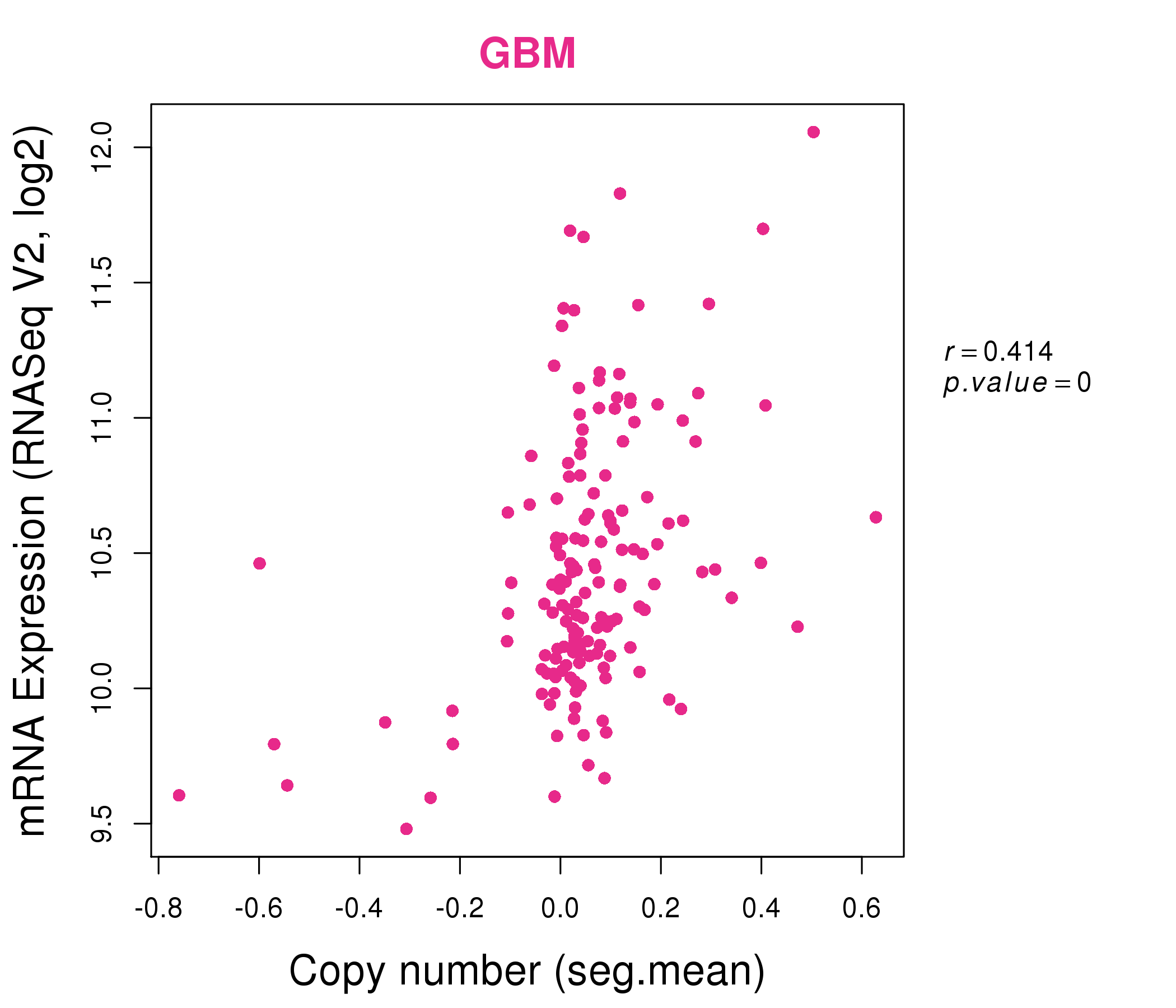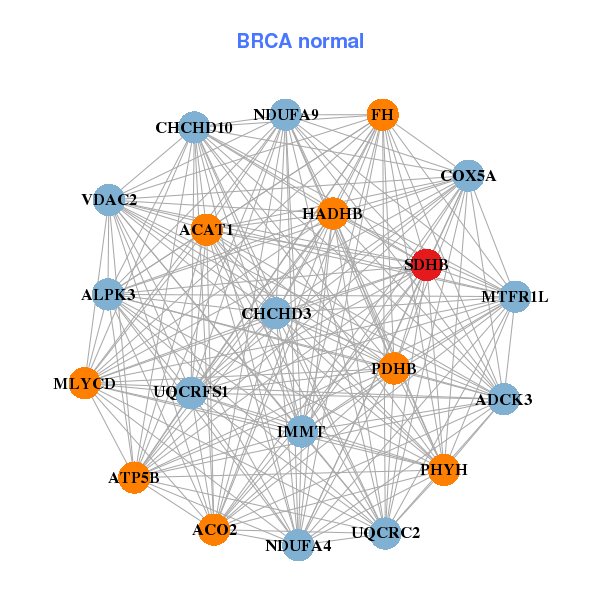|
|||||||||||||||||||||||||||||||||||||||||||||||||||||||||||||||||||||||||||||||||||||||||||||||||||||||||||||||||||||||||||||||||||||||||||||||||||||||||||||||||||||||||||||||||||||||||||||||||||||||||||||||||||||||||||||||||||||||||||||||||||||||||||||||||||||||||||||||||||||||||||||||||||||||||||||||||||||||||||||||||||||||||||||||||||||||||||||||
| |
| Phenotypic Information (metabolism pathway, cancer, disease, phenome) |
| |
| |
| Gene-Gene Network Information: Co-Expression Network, Interacting Genes & KEGG |
| |
|
| Gene Summary for SDHB |
| Basic gene info. | Gene symbol | SDHB |
| Gene name | succinate dehydrogenase complex, subunit B, iron sulfur (Ip) | |
| Synonyms | CWS2|IP|PGL4|SDH|SDH1|SDH2|SDHIP | |
| Cytomap | UCSC genome browser: 1p36.1-p35 | |
| Genomic location | chr1 :17345224-17380665 | |
| Type of gene | protein-coding | |
| RefGenes | NM_003000.2, | |
| Ensembl id | ENSG00000117118 | |
| Description | iron-sulfur subunit of complex IIsuccinate dehydrogenase [ubiquinone] iron-sulfur subunit, mitochondrial | |
| Modification date | 20141222 | |
| dbXrefs | MIM : 185470 | |
| HGNC : HGNC | ||
| Ensembl : ENSG00000117118 | ||
| HPRD : 01707 | ||
| Vega : OTTHUMG00000002289 | ||
| Protein | UniProt: P21912 go to UniProt's Cross Reference DB Table | |
| Expression | CleanEX: HS_SDHB | |
| BioGPS: 6390 | ||
| Gene Expression Atlas: ENSG00000117118 | ||
| The Human Protein Atlas: ENSG00000117118 | ||
| Pathway | NCI Pathway Interaction Database: SDHB | |
| KEGG: SDHB | ||
| REACTOME: SDHB | ||
| ConsensusPathDB | ||
| Pathway Commons: SDHB | ||
| Metabolism | MetaCyc: SDHB | |
| HUMANCyc: SDHB | ||
| Regulation | Ensembl's Regulation: ENSG00000117118 | |
| miRBase: chr1 :17,345,224-17,380,665 | ||
| TargetScan: NM_003000 | ||
| cisRED: ENSG00000117118 | ||
| Context | iHOP: SDHB | |
| cancer metabolism search in PubMed: SDHB | ||
| UCL Cancer Institute: SDHB | ||
| Assigned class in ccmGDB | A - This gene has a literature evidence and it belongs to cancer gene. | |
| References showing role of SDHB in cancer cell metabolism | 1. Baysal BE (2003) On the association of succinate dehydrogenase mutations with hereditary paraganglioma. Trends in Endocrinology & Metabolism 14: 453-459. go to article 2. Aspuria P-JP, Lunt SY, Väremo L, Vergnes L, Gozo M, et al. (2014) Succinate dehydrogenase inhibition leads to epithelial-mesenchymal transition and reprogrammed carbon metabolism. Cancer & metabolism 2: 21. go to article | |
| Top |
| Phenotypic Information for SDHB(metabolism pathway, cancer, disease, phenome) |
| Cancer | CGAP: SDHB |
| Familial Cancer Database: SDHB | |
| * This gene is included in those cancer gene databases. |
|
|
|
|
|
|
| |||||||||||||||||||||||||||||||||||||||||||||||||||||||||||||||||||||||||||||||||||||||||||||||||||||||||||||||||||||||||||||||||||||||||||||||||||||||||||||||||||||||||||||||||||||||||||||||||||||||||||||||||||||||||||||||||||||||||||||||||||||||||||||||||||||||||||||||||||||||||||||||||||||||||||||||||||||||||||||||||||||||||||||||||||||||||
Oncogene 1 | Significant driver gene in | ||||||||||||||||||||||||||||||||||||||||||||||||||||||||||||||||||||||||||||||||||||||||||||||||||||||||||||||||||||||||||||||||||||||||||||||||||||||||||||||||||||||||||||||||||||||||||||||||||||||||||||||||||||||||||||||||||||||||||||||||||||||||||||||||||||||||||||||||||||||||||||||||||||||||||||||||||||||||||||||||||||||||||||||||||||||||||||||
| cf) number; DB name 1 Oncogene; http://nar.oxfordjournals.org/content/35/suppl_1/D721.long, 2 Tumor Suppressor gene; https://bioinfo.uth.edu/TSGene/, 3 Cancer Gene Census; http://www.nature.com/nrc/journal/v4/n3/abs/nrc1299.html, 4 CancerGenes; http://nar.oxfordjournals.org/content/35/suppl_1/D721.long, 5 Network of Cancer Gene; http://ncg.kcl.ac.uk/index.php, 1Therapeutic Vulnerabilities in Cancer; http://cbio.mskcc.org/cancergenomics/statius/ |
| REACTOME_PYRUVATE_METABOLISM_AND_CITRIC_ACID_TCA_CYCLE | |
| OMIM | 115310; phenotype. 171300; phenotype. 185470; gene. 606864; phenotype. 612359; phenotype. |
| Orphanet | 201; Cowden syndrome. 29072; Hereditary pheochromocytoma-paraganglioma. 3208; Isolated succinate-CoQ reductase deficiency. 44890; Gastrointestinal stromal tumor. 97286; Carney-Stratakis syndrome. |
| Disease | KEGG Disease: SDHB |
| MedGen: SDHB (Human Medical Genetics with Condition) | |
| ClinVar: SDHB | |
| Phenotype | MGI: SDHB (International Mouse Phenotyping Consortium) |
| PhenomicDB: SDHB | |
| Mutations for SDHB |
| * Under tables are showing count per each tissue to give us broad intuition about tissue specific mutation patterns.You can go to the detailed page for each mutation database's web site. |
| There's no structural variation information in COSMIC data for this gene. |
| * From mRNA Sanger sequences, Chitars2.0 arranged chimeric transcripts. This table shows SDHB related fusion information. |
| ID | Head Gene | Tail Gene | Accession | Gene_a | qStart_a | qEnd_a | Chromosome_a | tStart_a | tEnd_a | Gene_a | qStart_a | qEnd_a | Chromosome_a | tStart_a | tEnd_a |
| CB157553 | SDHB | 1 | 165 | 1 | 17371028 | 17380473 | SDHB | 159 | 622 | 1 | 17349203 | 17359639 | |
| BU608192 | SDHB | 2 | 303 | 1 | 17345217 | 17349187 | SDHB | 300 | 422 | 1 | 17349199 | 17350563 | |
| CB240554 | SDHB | 2 | 303 | 1 | 17345217 | 17349187 | SDHB | 300 | 422 | 1 | 17349199 | 17350563 | |
| N70468 | SDHB | 1 | 165 | 1 | 17345249 | 17345412 | SDHB | 160 | 372 | 1 | 17355181 | 17371329 | |
| BF840536 | FOXK1 | 23 | 78 | 7 | 4809455 | 4809510 | SDHB | 70 | 314 | 1 | 17354572 | 17354815 | |
| Top |
| Mutation type/ Tissue ID | brca | cns | cerv | endome | haematopo | kidn | Lintest | liver | lung | ns | ovary | pancre | prost | skin | stoma | thyro | urina | |||
| Total # sample | 1 | 1 | ||||||||||||||||||
| GAIN (# sample) | 1 | 1 | ||||||||||||||||||
| LOSS (# sample) |
| cf) Tissue ID; Tissue type (1; Breast, 2; Central_nervous_system, 3; Cervix, 4; Endometrium, 5; Haematopoietic_and_lymphoid_tissue, 6; Kidney, 7; Large_intestine, 8; Liver, 9; Lung, 10; NS, 11; Ovary, 12; Pancreas, 13; Prostate, 14; Skin, 15; Stomach, 16; Thyroid, 17; Urinary_tract) |
| Top |
|
 |
| Top |
| Stat. for Non-Synonymous SNVs (# total SNVs=17) | (# total SNVs=4) |
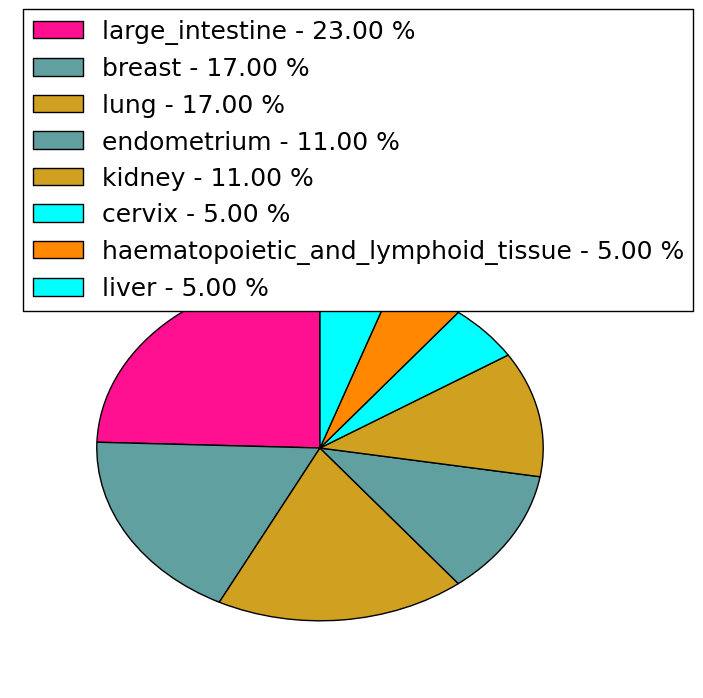 |  |
(# total SNVs=0) | (# total SNVs=0) |
| Top |
| * When you move the cursor on each content, you can see more deailed mutation information on the Tooltip. Those are primary_site,primary_histology,mutation(aa),pubmedID. |
| GRCh37 position | Mutation(aa) | Unique sampleID count |
| chr1:17349180-17349180 | p.R230C | 3 |
| chr1:17355224-17355224 | p.C98C | 2 |
| chr1:17354296-17354296 | p.S163Y | 1 |
| chr1:17371382-17371382 | p.A25V | 1 |
| chr1:17354302-17354302 | p.D161G | 1 |
| chr1:17380494-17380494 | p.L7L | 1 |
| chr1:17355132-17355132 | p.P129R | 1 |
| chr1:17380511-17380511 | p.A2P | 1 |
| chr1:17345379-17345379 | p.V280V | 1 |
| chr1:17355201-17355201 | p.N106S | 1 |
| Top |
|
 |
| Point Mutation/ Tissue ID | 1 | 2 | 3 | 4 | 5 | 6 | 7 | 8 | 9 | 10 | 11 | 12 | 13 | 14 | 15 | 16 | 17 | 18 | 19 | 20 |
| # sample | 1 | 1 | 2 | 1 | 2 | 2 | 1 | 5 | 2 | |||||||||||
| # mutation | 1 | 1 | 2 | 1 | 2 | 2 | 1 | 5 | 2 | |||||||||||
| nonsynonymous SNV | 1 | 1 | 2 | 1 | 1 | 1 | 1 | 4 | 2 | |||||||||||
| synonymous SNV | 1 | 1 | 1 |
| cf) Tissue ID; Tissue type (1; BLCA[Bladder Urothelial Carcinoma], 2; BRCA[Breast invasive carcinoma], 3; CESC[Cervical squamous cell carcinoma and endocervical adenocarcinoma], 4; COAD[Colon adenocarcinoma], 5; GBM[Glioblastoma multiforme], 6; Glioma Low Grade, 7; HNSC[Head and Neck squamous cell carcinoma], 8; KICH[Kidney Chromophobe], 9; KIRC[Kidney renal clear cell carcinoma], 10; KIRP[Kidney renal papillary cell carcinoma], 11; LAML[Acute Myeloid Leukemia], 12; LUAD[Lung adenocarcinoma], 13; LUSC[Lung squamous cell carcinoma], 14; OV[Ovarian serous cystadenocarcinoma ], 15; PAAD[Pancreatic adenocarcinoma], 16; PRAD[Prostate adenocarcinoma], 17; SKCM[Skin Cutaneous Melanoma], 18:STAD[Stomach adenocarcinoma], 19:THCA[Thyroid carcinoma], 20:UCEC[Uterine Corpus Endometrial Carcinoma]) |
| Top |
| * We represented just top 10 SNVs. When you move the cursor on each content, you can see more deailed mutation information on the Tooltip. Those are primary_site, primary_histology, mutation(aa), pubmedID. |
| Genomic Position | Mutation(aa) | Unique sampleID count |
| chr1:17349180 | p.R230C | 2 |
| chr1:17354302 | p.R38H | 1 |
| chr1:17354337 | p.A33V | 1 |
| chr1:17355201 | p.A2A | 1 |
| chr1:17345379 | p.V280V | 1 |
| chr1:17359560 | p.E265Q | 1 |
| chr1:17345426 | p.K255R | 1 |
| chr1:17371269 | p.V211A | 1 |
| chr1:17349104 | p.P209H | 1 |
| chr1:17371343 | p.G208E | 1 |
| * Copy number data were extracted from TCGA using R package TCGA-Assembler. The URLs of all public data files on TCGA DCC data server were gathered on Jan-05-2015. Function ProcessCNAData in TCGA-Assembler package was used to obtain gene-level copy number value which is calculated as the average copy number of the genomic region of a gene. |
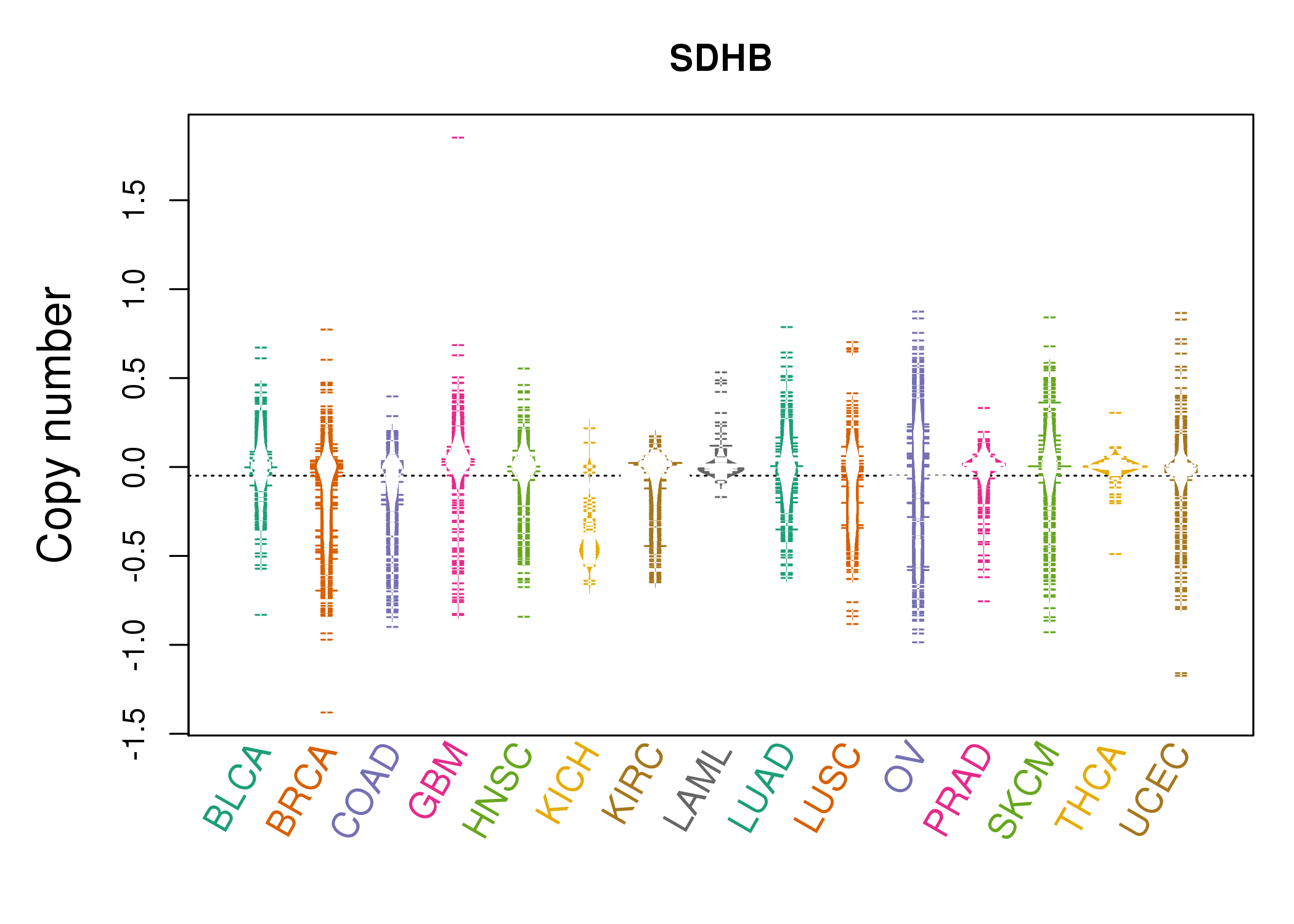 |
| cf) Tissue ID[Tissue type]: BLCA[Bladder Urothelial Carcinoma], BRCA[Breast invasive carcinoma], CESC[Cervical squamous cell carcinoma and endocervical adenocarcinoma], COAD[Colon adenocarcinoma], GBM[Glioblastoma multiforme], Glioma Low Grade, HNSC[Head and Neck squamous cell carcinoma], KICH[Kidney Chromophobe], KIRC[Kidney renal clear cell carcinoma], KIRP[Kidney renal papillary cell carcinoma], LAML[Acute Myeloid Leukemia], LUAD[Lung adenocarcinoma], LUSC[Lung squamous cell carcinoma], OV[Ovarian serous cystadenocarcinoma ], PAAD[Pancreatic adenocarcinoma], PRAD[Prostate adenocarcinoma], SKCM[Skin Cutaneous Melanoma], STAD[Stomach adenocarcinoma], THCA[Thyroid carcinoma], UCEC[Uterine Corpus Endometrial Carcinoma] |
| Top |
| Gene Expression for SDHB |
| * CCLE gene expression data were extracted from CCLE_Expression_Entrez_2012-10-18.res: Gene-centric RMA-normalized mRNA expression data. |
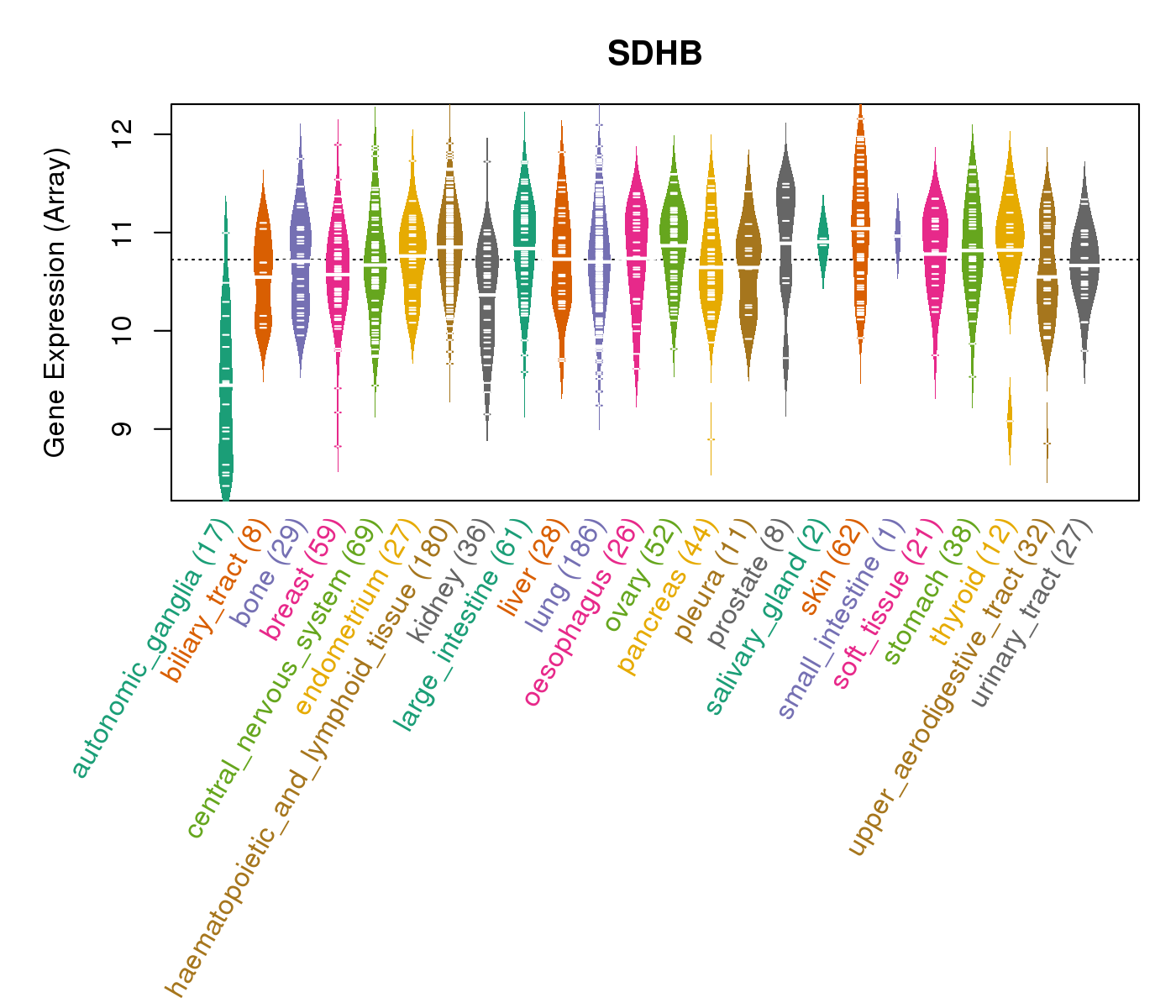 |
| * Normalized gene expression data of RNASeqV2 was extracted from TCGA using R package TCGA-Assembler. The URLs of all public data files on TCGA DCC data server were gathered at Jan-05-2015. Only eight cancer types have enough normal control samples for differential expression analysis. (t test, adjusted p<0.05 (using Benjamini-Hochberg FDR)) |
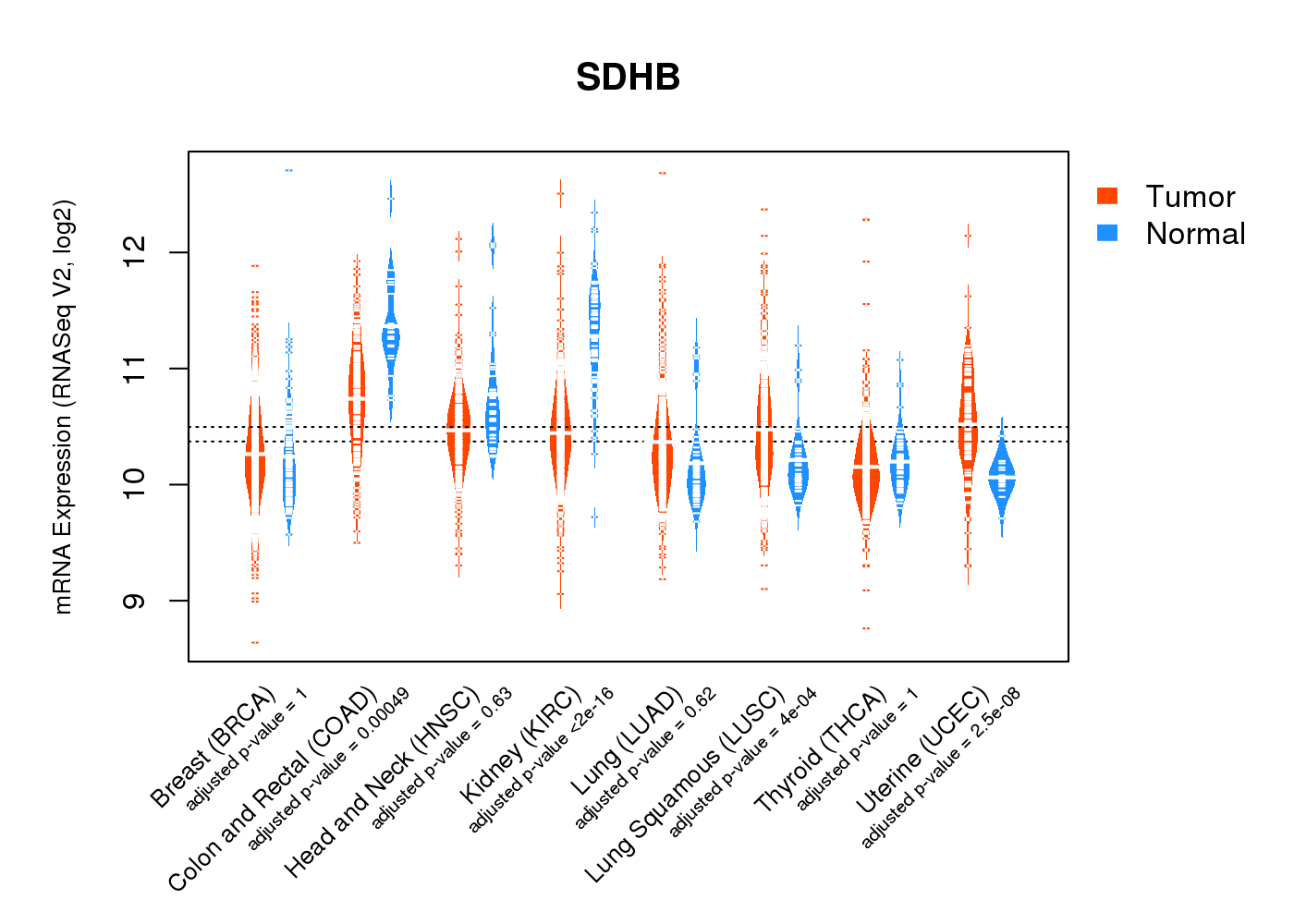 |
| Top |
| * This plots show the correlation between CNV and gene expression. |
: Open all plots for all cancer types
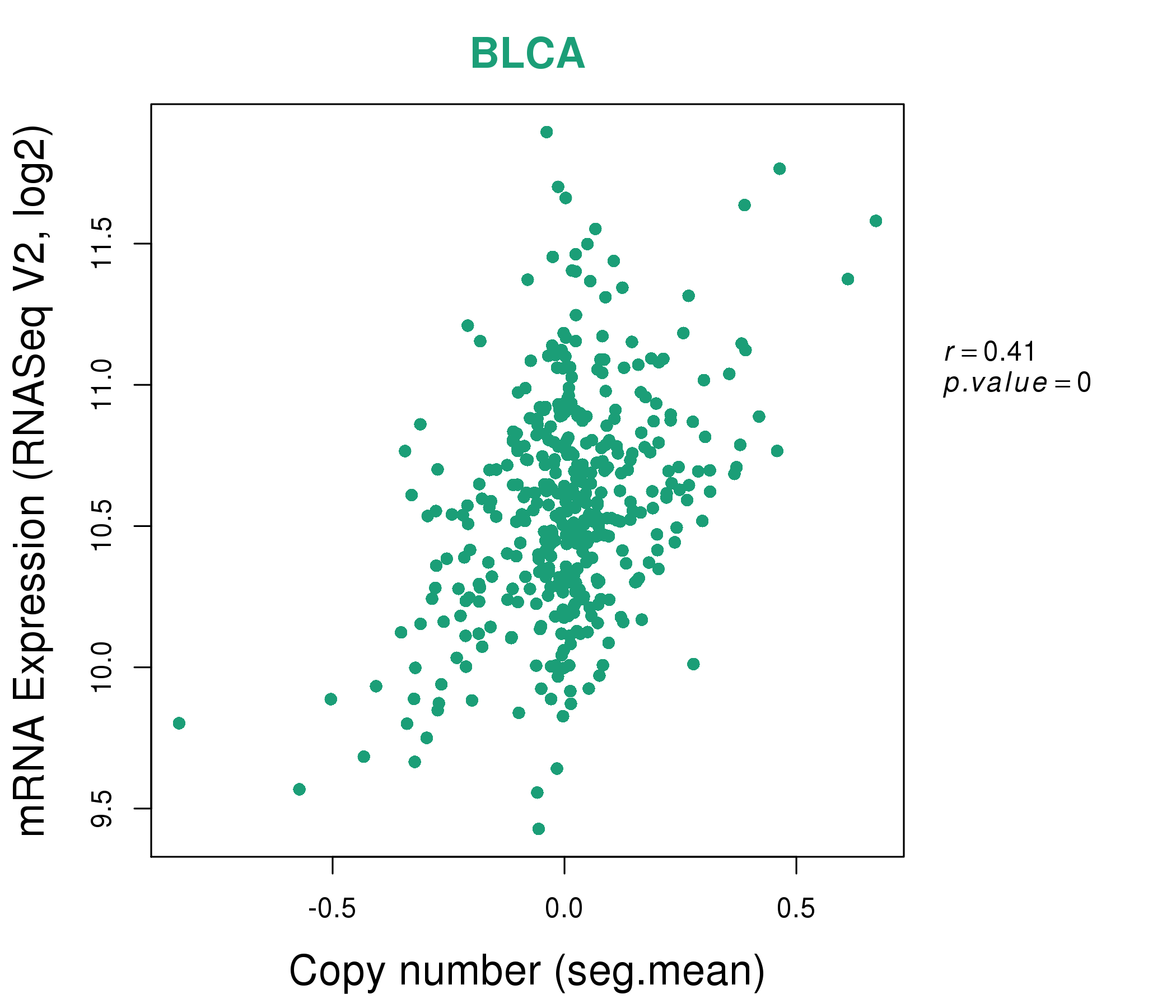 |
|
 |
|
| Top |
| Gene-Gene Network Information |
| * Co-Expression network figures were drawn using R package igraph. Only the top 20 genes with the highest correlations were shown. Red circle: input gene, orange circle: cell metabolism gene, sky circle: other gene |
: Open all plots for all cancer types
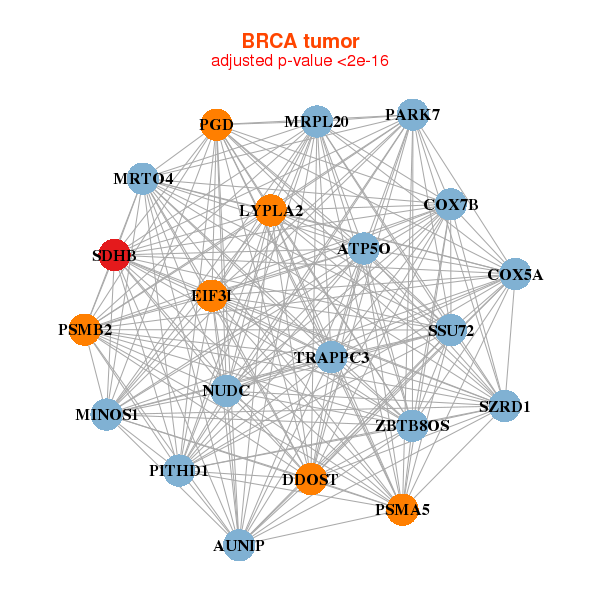 |
| ||||
| ATP5O,PITHD1,AUNIP,SZRD1,MINOS1,COX5A,COX7B, DDOST,EIF3I,LYPLA2,MRPL20,MRTO4,NUDC,PARK7, PGD,PSMA5,PSMB2,SDHB,SSU72,TRAPPC3,ZBTB8OS | ACAT1,ACO2,ALPK3,ATP5B,ADCK3,CHCHD10,CHCHD3, COX5A,MTFR1L,FH,HADHB,IMMT,MLYCD,NDUFA4, NDUFA9,PDHB,PHYH,SDHB,UQCRC2,UQCRFS1,VDAC2 | ||||
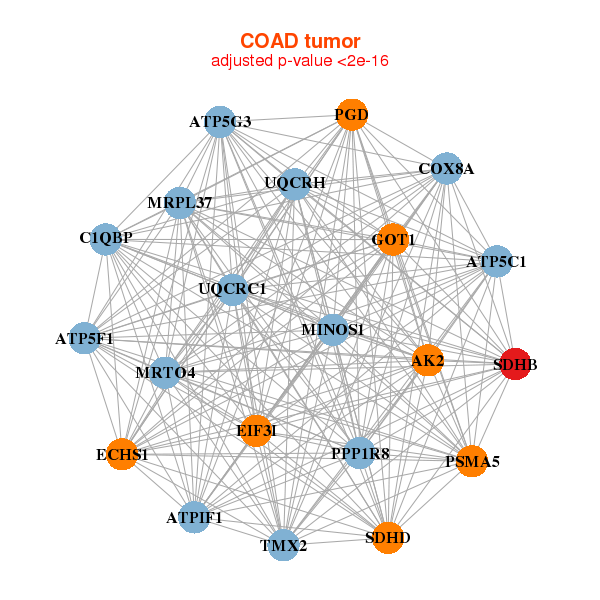 |
| ||||
| AK2,ATP5C1,ATP5F1,ATP5G3,ATPIF1,MINOS1,C1QBP, COX8A,ECHS1,EIF3I,GOT1,MRPL37,MRTO4,PGD, PPP1R8,PSMA5,SDHB,SDHD,TMX2,UQCRC1,UQCRH | ATP5C1,ATP5F1,ATP5G3,ATPIF1,MPC1,C14orf2,C2orf47, COX6A1,ETFA,HINT1,MRPL48,MRPS36,NDUFB9,NDUFS3, PPA2,SDHB,SDHD,SUCLG1,UQCR10,UQCRC2,UQCRFS1 |
| * Co-Expression network figures were drawn using R package igraph. Only the top 20 genes with the highest correlations were shown. Red circle: input gene, orange circle: cell metabolism gene, sky circle: other gene |
: Open all plots for all cancer types
| Top |
: Open all interacting genes' information including KEGG pathway for all interacting genes from DAVID
| Top |
| Pharmacological Information for SDHB |
| DB Category | DB Name | DB's ID and Url link |
| Organism-specific databases | PharmGKB | PA35606; -. |
| Organism-specific databases | CTD | 6390; -. |
| * Gene Centered Interaction Network. |
 |
| * Drug Centered Interaction Network. |
| DrugBank ID | Target Name | Drug Groups | Generic Name | Drug Centered Network | Drug Structure |
| DB00139 | succinate dehydrogenase complex, subunit B, iron sulfur (Ip) | approved; nutraceutical | Succinic acid | 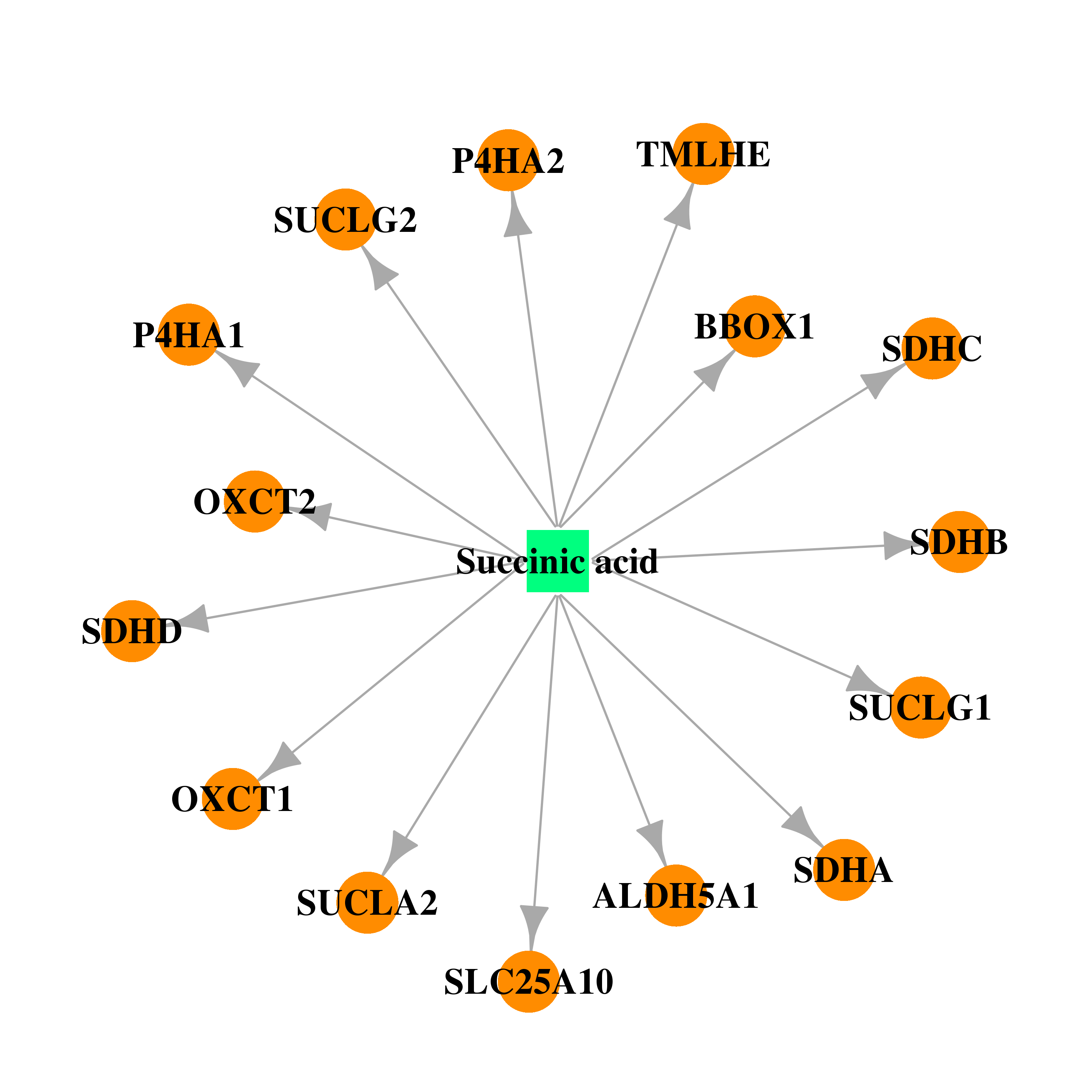 |  |
| DB04141 | succinate dehydrogenase complex, subunit B, iron sulfur (Ip) | experimental | 2-Hexyloxy-6-Hydroxymethyl-Tetrahydro-Pyran-3,4,5-Triol | 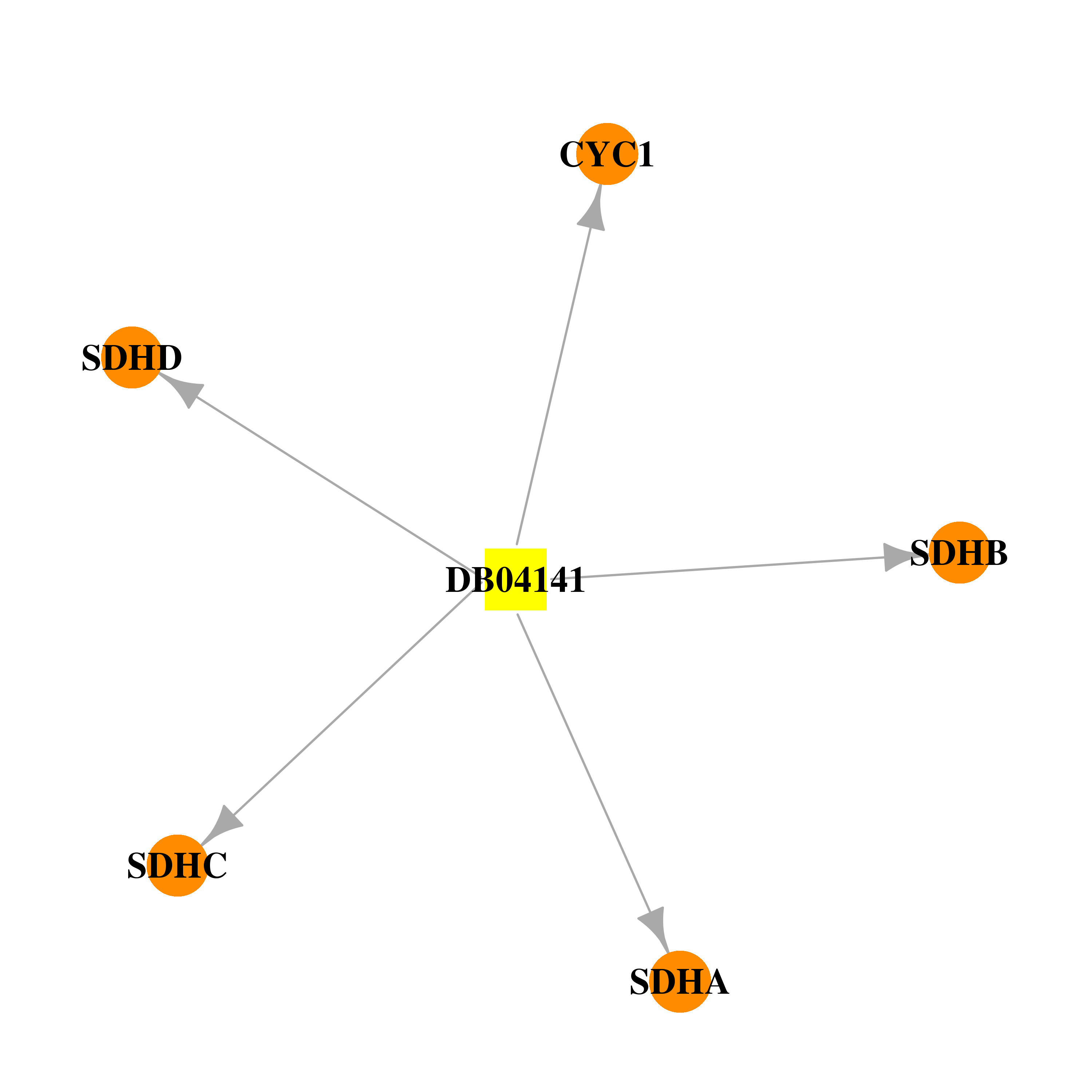 | 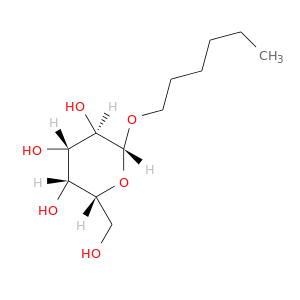 |
| DB08689 | succinate dehydrogenase complex, subunit B, iron sulfur (Ip) | experimental | UBIQUINONE-1 | 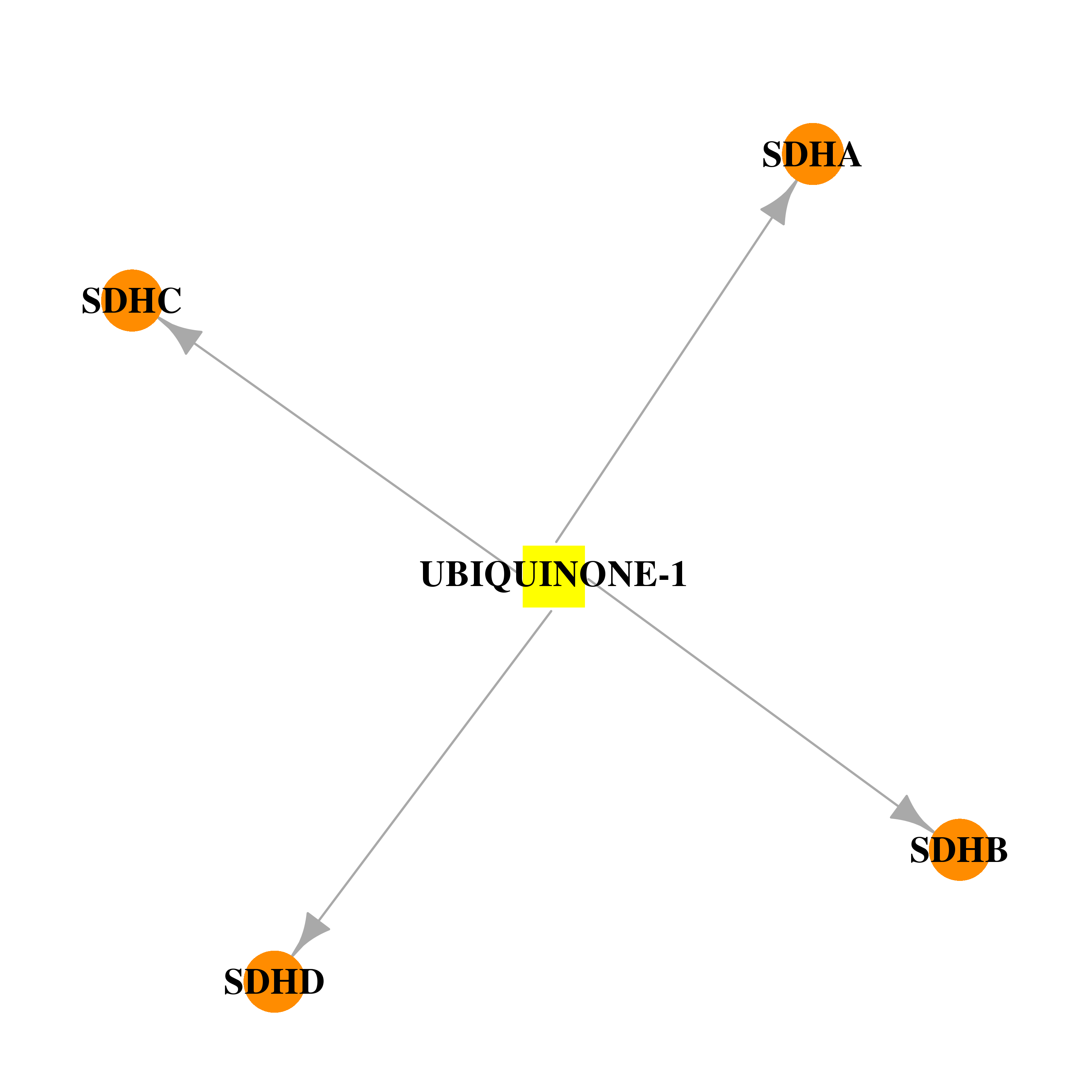 |  |
| Top |
| Cross referenced IDs for SDHB |
| * We obtained these cross-references from Uniprot database. It covers 150 different DBs, 18 categories. http://www.uniprot.org/help/cross_references_section |
: Open all cross reference information
|
Copyright © 2016-Present - The Univsersity of Texas Health Science Center at Houston @ |






